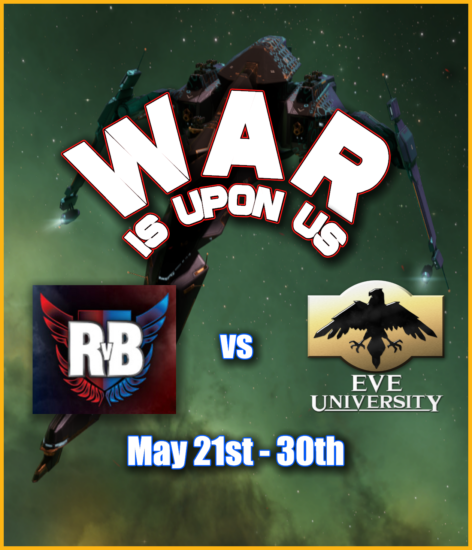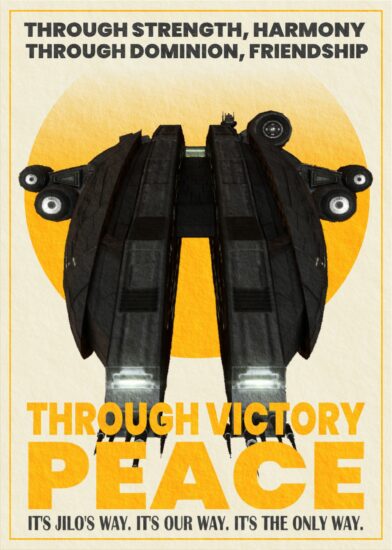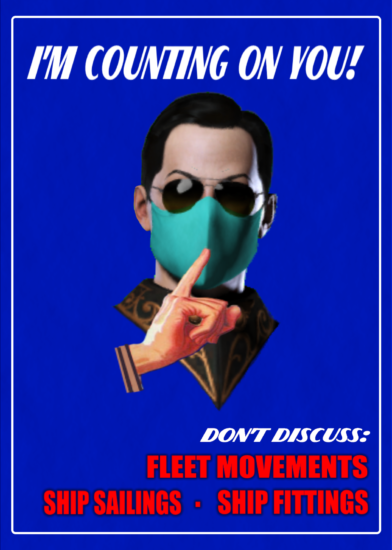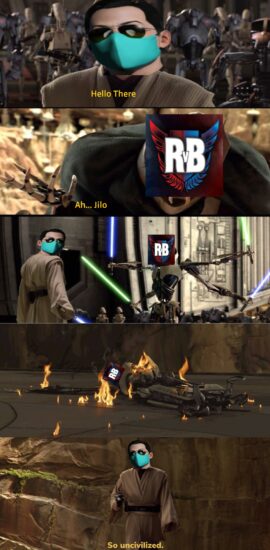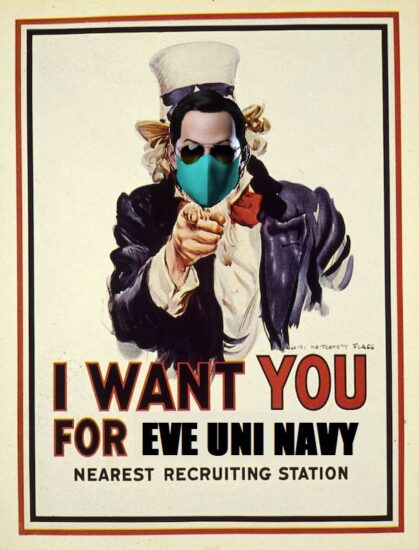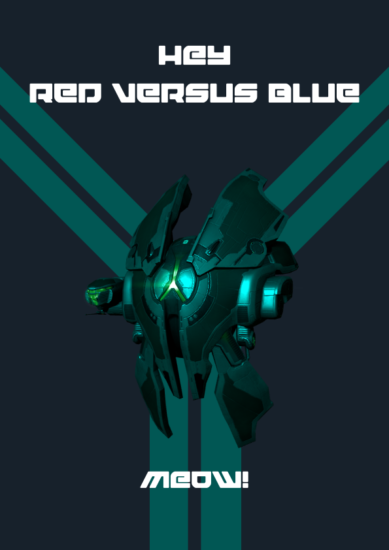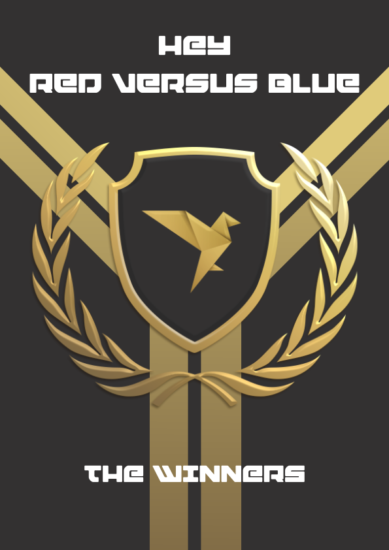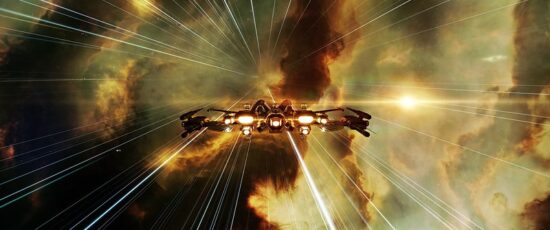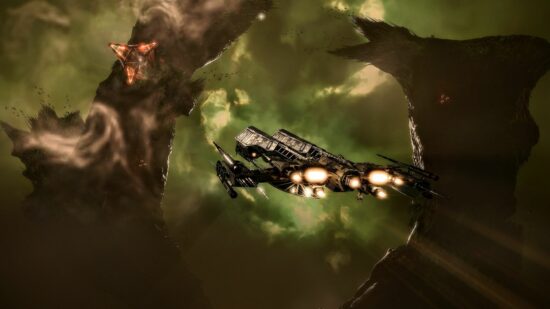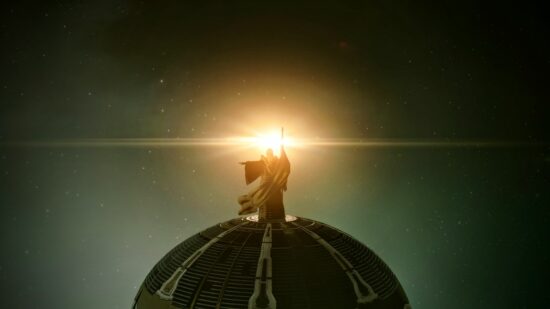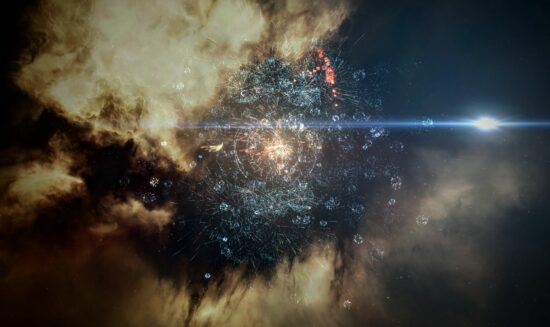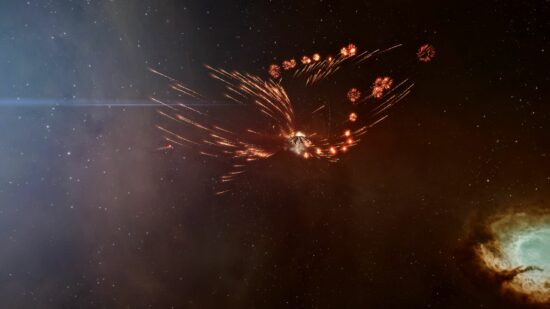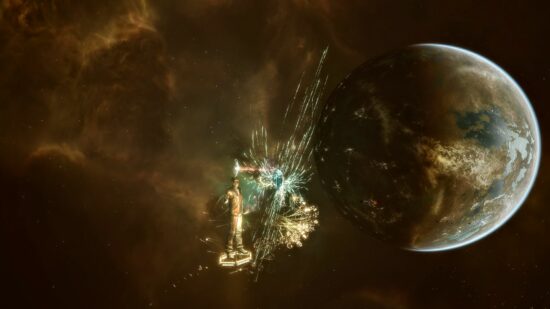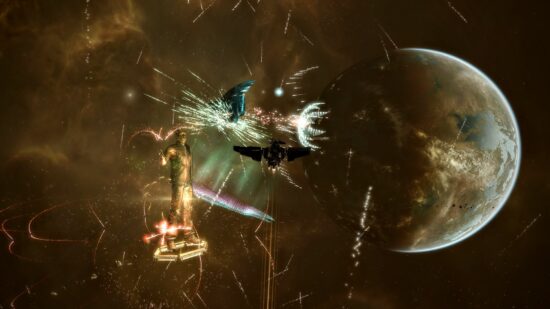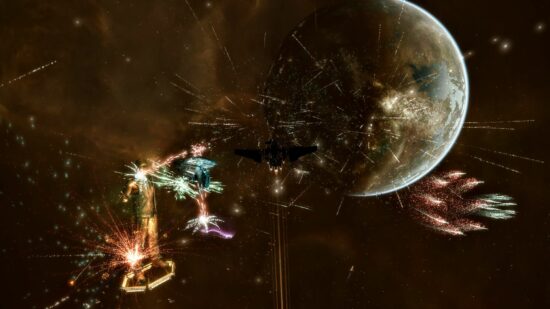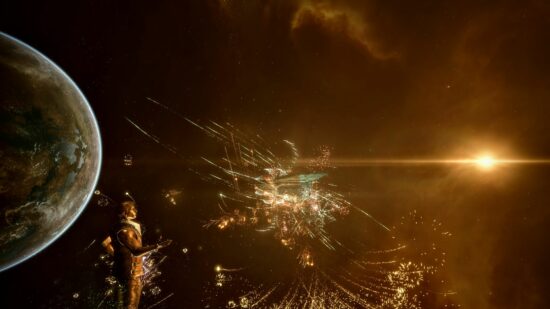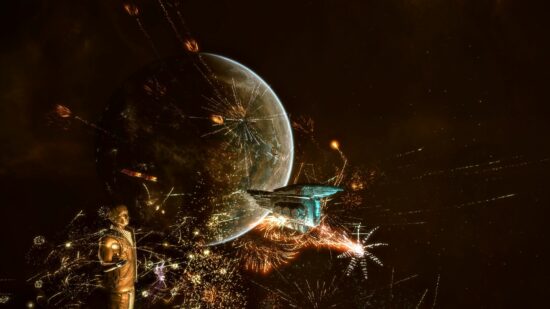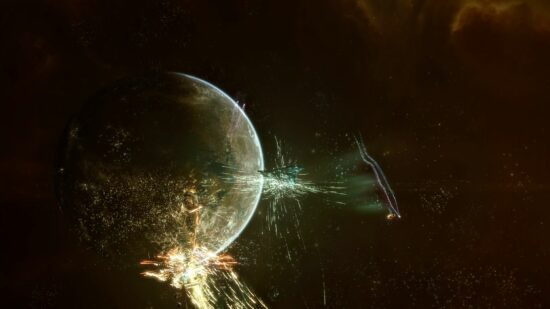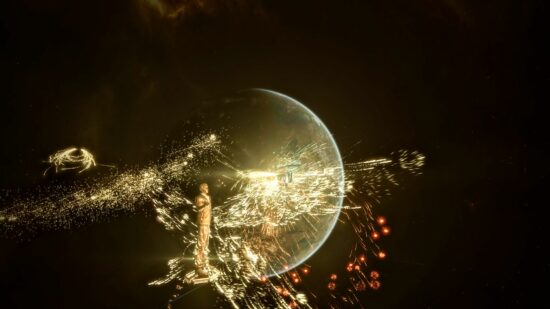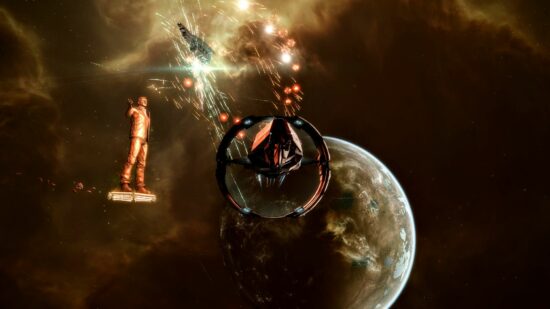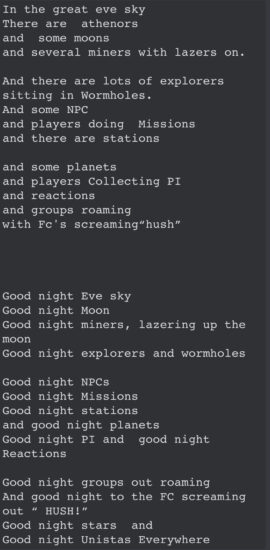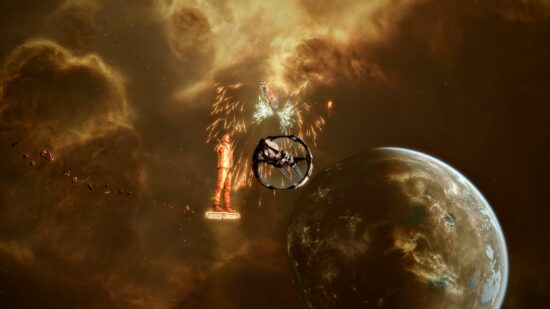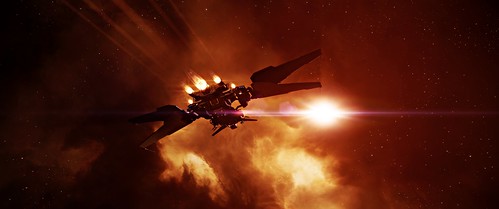Goal: gorge on the Triglavian Wrecks after an assault on the Stellar Fleet Deployment Site in Triglavian Minor Victory Systems
### Background
Senior Fleet Commander Aryan Aryaie of the EDENCOM Defense Initiative invited me to attend the assault on the Triglavian Dazh Liminality Locus Structure. Dozens of EDI members spent a month testing out tactics and Ship Fittings against the Triglavian Fleet defending the Stellar Fleet Deployment Site Cosmic Anomaly in Minor Triglavian Victory Systems. It was time to strike and they wanted me to report on the culmination of their efforts.
Aryan Aryaie published the goal, Ship Fittings and form-up location three days in advance on EDI Discord Channel. All Ship Fittings were eligible for EDI’s Ship Replacement Program. Each capsuleer was assigned a ship before the Event. Inspired by Tolerin Escipions passionate letter about the importance of EWAR, I chose to fly a prototype Electronic Warfare Blackbird Cruiser. 😛
### Form up
We connected to the EDI Discord and wrote Es in the “EDI Public” in-game Chat Channel. After everyone was invited to the Fleet, the Fleet was set to free-move and we moved ourselves to the appropriate Squads.
The Fleet Commander delegated tagging and anchoring to DPS, Logistics and EWAR Commanders. They assigned a Drone Bunny and explained what each capsuleer will be doing after taking the Acceleration Gates into the Stellar Fleet Deployment Site. Upon my request, the Fleet Commander also assigned Mattio Ohaya as my personal handler. Their responsibility was to protect me from danger, to take additional notes and to make sure I am able to dedicate a sizable portion of my time to capturing data.
The setup to take out the Triglavian Stellar Fleet Deployment Site defense Fleet is extensive. It took Aryan Aryaie and their Fleet many attempts to optimize the Fleet composition, Ship Fittings, role assignments, risk mitigation and tactics.
Stellar Fleet Deployment Site is unique because:
- only up to Cruiser sized vessels can squeeze through the Acceleration Gate
- it houses the Dazh Liminality Locus Structure that halves the maximum number of locked targets
### Rules, priorities and responsibilities
Tagging:
- DPS Commander uses 1, 2, 3 to tag Cruisers, then Battlecruisers in range
- EWAR Commander uses A, B, C to tag the most dangerous Drekavac Battlecruisers
Kill priorities:
- pulverize any Kikimora deployed weapon systems (I was aghast when I found out I was the first capsuleer to ever describe them on the Wiki :S)
- destroy the Dazh Koliada Industrial ship
- atomize weapon system deploying Kikimoras
- dismantle DPS Commander’s tags 1, 2 and 3 in ascending order
Targets are jammed:
- A by Sovereign Solette
- B by Arin Mara 🙂
- C by Damage Dealing Squad
Squads should enter and perform their duties in the following order:
- Bait ships – stretch out the Triglavian defense Fleet across 100km
- DPS and Logisticians – establish Anchor, tag, move the Fleet and fire
- EWAR – suppress the most powerful Battlecruisers
- Salvager – scoop up the Wrecks and sell the loot to hungry Jita shoppers
Standing orders:
- Maintain Combat Communication protocols
- EWAR capsuleers must maintain distance from Triglavian ships
- EWAR ship must warp out to a Celestial if in danger
- Deploy Drones only after weapon system deploying Kikimoras are atomized and the Fleet Commander gives the green light
- Do not salvage without the Fleet Commander’s permission
- Do not shoot the Dazh Liminality Locus as it will summon a powerful Response Fleet
- Do not shoot Suspects or Criminals
### Fleet Maneuver Practice
Fleet Commander streamed over Discord and taught the Fleet how to:
- setup the Watchlist
- setup the Overview to see the Kikimora deployed weapon systems
- find align Broadcasts on the Overview
- approach, align and warp out to a Celestial
- use the Tactical Overlay to find north
- anchor and maintain bearing
- manually pilot and maneuver in space
- tag enemy ships
- jam targets
- armor repair other Fleet members
- assign Drones to the Drone Bunny
### Timeline
- 16:00 – Members begin connecting to the Public EDI Discord voice channel
- 16:10 – Fleet forms, Es go up in the “EDI Public” in-game Chat Channel
- 16:20 – Command and Drone Bunny roles and duties are delegated
- 16:25 – Rules, priorities and responsibilities are established
- 16:30 – Fleet undocks for Fleet Maneuver Practice
- 16:50 – Fleet Commander assigns a capsuleer to watch the Directional Scanners
- 17:00 – Fleet Maneuver Practice ends
- 17:05 – Fleet warped to the first Stellar Fleet Deployment Site in the Litiura System
- 17:10 – Triglavian defense fleet warps off, leaving the Dazh Liminality Locus undefended
- 17:15 – Took a 15 minute break for bio, ship repairs and beverage resupply
- 17:30 – Undocked and set destination for the Nonni System
- 17:35 – Acceleration Gates to the first Site in Litiura disappear
- 17:36 – Salvager begins scooping up Wrecks unmolested by Triglavians
- 17:40 – Warped to the second Stellar Fleet Deployment Site in the Nonni System
- 17:55 – Triglavian defense fleet warps off, leaving the Dazh Liminality Locus undefended
- 17:56 – “For EDENCOM! For High Sec! For the State!” appears en masse in Local Chat 😀
- 18:00 – Fleet is disbanded
### Fleet Commander
- Senior Fleet Commander [Aryan Aryaie](https://evewho.com/character/2116877605) of the [EDENCOM Defense Initiative](http://edencom.space/join.php)
- took suggestions from the Fleet about who should perform which role
- delegated duties and tasks
- reminded Fleet Members to start all sentences with their name
- wrote detailed instructions and Fleet rules in the Message Of The Day
- streamed the Fleet Maneuver Practice on Discord
- encouraged Fleet Members to ask questions
- warped the Fleet
- did not fear being ambushed by other capsuleer Fleets in the Stellar Fleet Deployment Site
- spelled out System and Cosmic Anomaly identifiers in English rather then phonetically
- helped coordinate Logisticians
### Fleet Members
- Adnan Sohail – Logistician
- Altreilea Merud – Bait Multiboxer
- Arin Mara – EWAR! 🙂
- Aryan Aryaie – Fleet Commander
- Black Lycan – Logistician
- bomberrocks – Drone Bunny
- caroua Blacksteel – Salvager
- Eupraxia J – Logistician
- Francis Terona – DPS
- Kalam Merud – Bait Multiboxer
- Malac Merud – Bait Multiboxer
- Mattio Ohaya – DPS and my Handler 😛
- Markov Martingale – DPS
- Molodaya kochrgashka – DPS Commander
- Mwadeeb2 – Logistics Commander and Anchor
- Press i – DPS
- Prospektor Schipplock – DPS Anchor
- Sovereign Solette – EWAR Commander
- Vital Remains – DPS
### Outcomes
After completing the Stellar Fleet Deployment Site you will receive a message “Unfortunately only the pilots in top 49 contributors are eligible for rewards.” if you don’t shoot a Triglavian ship inside the Cosmic Anomaly. If you were EWAR like me, you may get the worse of both world: no reward and a Standing loss with the Triglavians.
The Bait ship was only able to pull away three out of more then a dozen ships.
Both Sites were completed without any losses!
I, Arin Mara, 14th Wiki Curator of EVE University, am not aligned with EDENCOM or EDENCOM Defense Initiative. I would gladly make a report on Events, Fleets or Expeditions organized by capsuleers allied with the Triglavian Collective (or Rogue Drones or Sleepers or Drifters! :P). I have flown and made a report for EDI because Senior Fleet Commander Aryan Aryaie invited me more then a dozen times to attend their Fleet and always bribed me with a cushy role and a custom pre-approved SRPed Ship Fitting. 😛




